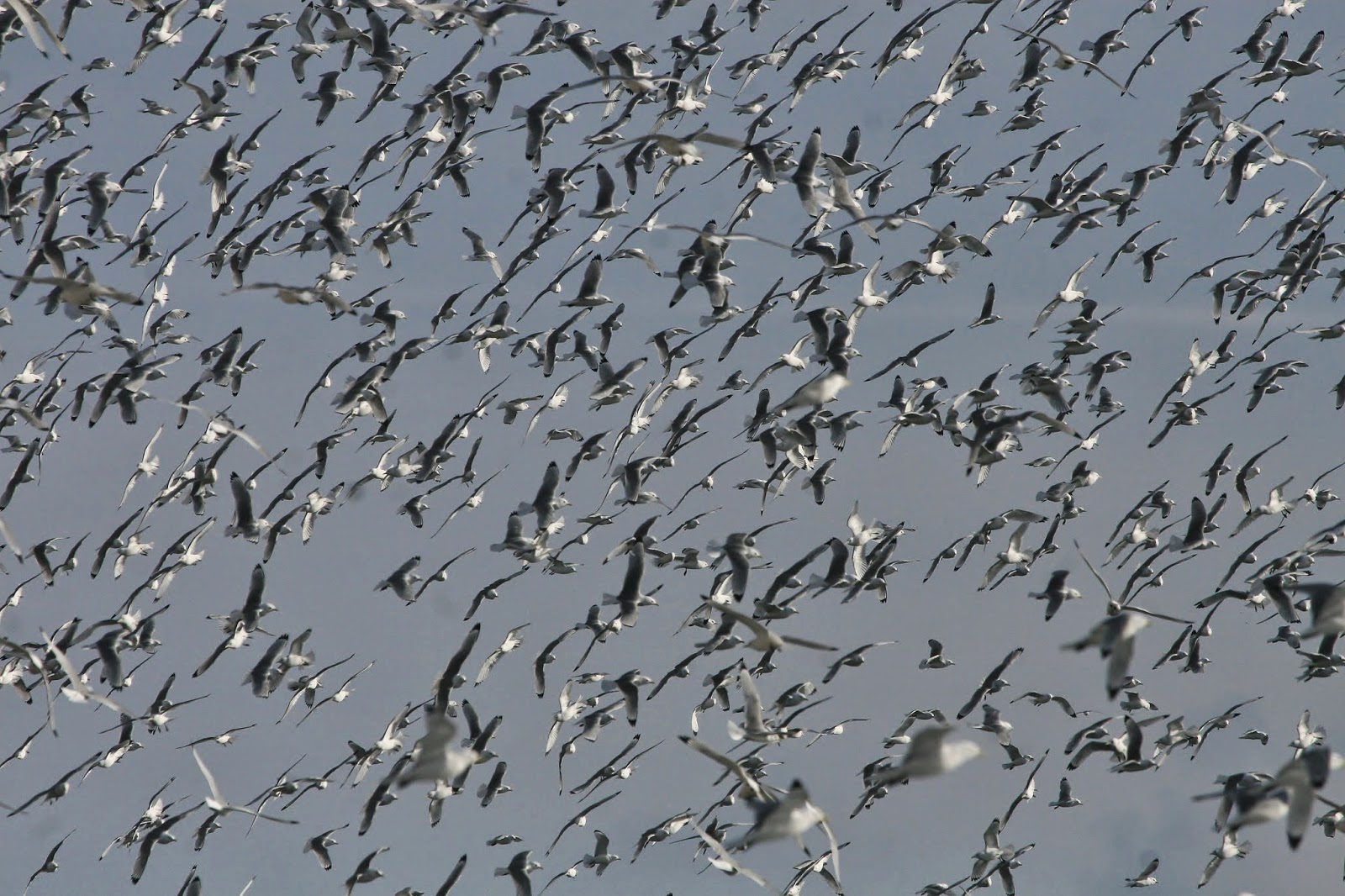The first eiders of the trip left quite an impression. On the coastal express ferry from Kirkenes to Vardo, we were gobsmacked by the raft of up to 25,000 eiders sitting and feeding close together in the fjord. As we passed, they became backlit and you could clearly see a spray from within the flock which was actually a combined splash created from diving eiders. To be able to see this from at least a mile away was amazing!
As there was not a single moment on the trip where I was bored, it seems strange to pick a highlight, but given that Grahame's wife Jacqui was almost more entertained by my 'kid on Christmas morning' excitement from within the King Eider photography hide than the actual birds, I will have to say that this was the highlight of the trip for me.
Ørjan Hansens runs a floating Eider hide in Båtsfjord harbour, Northern Varanger. This allows you to sit/lie comfortably within a floating bird hide whilst 3 species of Eider and Long-tailed Ducks feed on scraps outside the fish factory just feet in front of you. Whilst I am used to seeing Common Eider at close quarters at Martin Mere WWT etc (not the same, I know) it was fantastic to see these completely wild birds going about their business, oblivious to your presence!
A memory that will always stay with me is looking up from the camera after photographing a drake King Eider 4-5 metres away and seeing a drake Steller's Eider literally close enough to touch right outside the window of the hide!
Needless to say, I got an awful lot of photos, so I will post a selection of each species on show, starting with my personal highlight of the trip.
Steller's Eider
Female Steller's are really different to the males and remarkably dark when sat next to the white and orange beacons! I set myself a personal goal whilst in the hide to get a decent photo of the females and capture their subtlety. I was really pleased with the above photo as I think I've captured the bird in a nice pose and nicely exposed showing the warmer flecking to the plumage. Beautiful birds in their own right!
King Eider
Whilst this hide mainly advertises Kings, we were mainly treated to Steller's with at least 30 feeding out in front. Kings were much quieter with the occasional bird making a brief appearance. Towards the end of the 3 hour stint in the hide, we were treated to a 'flock' of 8 including two lovely adult males. They really are gorgeous birds, especially at this distance.
I have to admit, I was more interested in the 1st winter birds. The above two are both of the same age, but look very different indeed! I was more interested in these from an ID point of view as, let's be honest, the males don't pose much of a head scratching identification! The dark 1st winters were really interesting though. I wonder how similar these would look to drake Common Scoters if they were out 'on the horizon' in loose association with a distant scoter flock (size not taken into consideration of course!)
Common Eider
I'm afraid the twitcher inside got the better of me and I didn't take advantage of the Common Eiders achieving less than 10 photos. I guess I thought I could always go to a WWT centre and take decent photos, whereas the same can't be said for King and Steller's! Great birds though when you really look at them.
Long-tailed Duck
It was a real treat to get great views of Long-tailed Ducks at this close range too, as well as hearing that amazing call! There were a couple of adult males in front of the hide, but for these, I just put the camera down and watched! These were very shy birds though and rarely stayed in front of the hide for long. I feel I achieved a couple of nice photos of these 1st winter males though.
Away from the eider hide, there was a really confiding flock of 21 Steller's in Vardo harbour which travelled around in a very tight flock which looked mainly white when the males were ready to dive with their white wing coverts exposed.
Arctic water is spectacularly clean, so it was fantastic to see the Steller's feeding underwater on the harbour floor about 30 feet down. A great experience that I certainly won't ever get to see in a UK harbour!
The above pic was taken from the restaurant of the hotel we were staying in in Vardo town! Not a bad view whilst you're eating!
The Eider vortex is now a thing of legend! We went out on a 'safari' in the Varangerfjord and it took what felt like an age and one seasick casualty before we found the raft. As you approach, the entire flock lifts to the sky and starts circling around the boat and you witness the Eider Vortex! There was a great showing of all three species with the main focus being Common Eider and very closely followed by Kings.
It was to my horror that, on the day we came back, Tormod was looking through his vortex photos and refound the Pacific Eider first discovered a month before Gullfest, meaning I was less than 50m from a first for the Western Palearctic and I didn't even know about it! A real shame as it's a stunning bird, but it doesn't detract too much from the amazing birds I actually did see.
Of the birds I scrutinised, I only actually saw 2 other 1st winter males (both of which had some white flecking on the median and lesser coverts.
A fantastic trio of ducks and the three species that really do make Gullfest one of the best birdwatching festivals in the world. Incredible.




























































